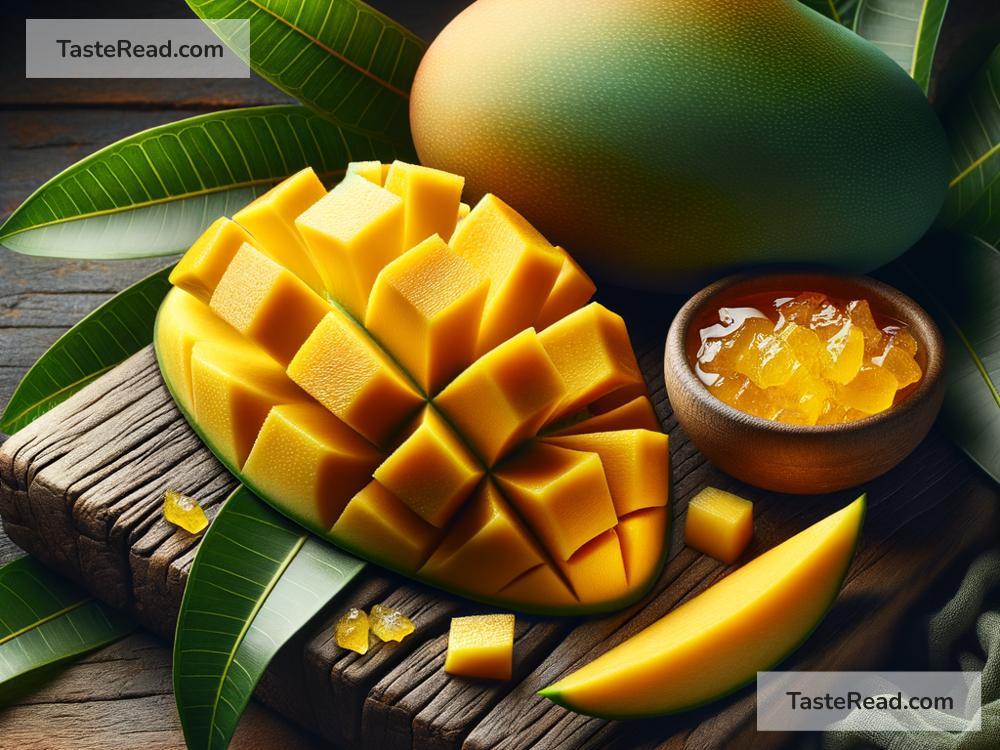Why Some Fruits, Like Mangoes, Have Resinous Undertones
Fruits are delightful treats from nature, each with their own unique flavors and fragrances. We all savor the sweetness of mangoes, strawberries, or bananas. But sometimes, our favorite fruits surprise us with a hint of something unexpected—a resin-like, piney, or earthy undertone. Have you ever bitten into a mango, only to notice a faint trace of resin or pine? If you’ve wondered why this happens, you’re not alone! Let’s explore why some fruits, like mangoes, develop resinous undertones, explained in simple and clear language.
What Does “Resinous” Mean?
Before we dive into the science, let’s clarify what “resinous undertones” actually are. Resinous flavors or aromas refer to a scent or taste that reminds us of pine, tree sap, or the earthy smell of a forest. Imagine the sharp yet pleasant scent of a freshly cut Christmas tree. That’s resinous!
In fruits, this subtle flavor might seem odd at first because we mostly expect sweetness or tanginess. But in certain fruits like mangoes, resinous notes are part of what makes them unique and complex in flavor.
What Causes Resinous Undertones in Mangoes and Other Fruits?
The resinous notes in fruits come down to chemistry—specifically, the natural compounds found in these fruits. Mangoes, for example, contain certain aromatic chemicals that create this distinctive taste and smell. Let’s break it down:
1. Presence of Terpenes
Terpenes are natural, aromatic compounds found in plants. They are responsible for many of the scents and flavors we experience in fruits, flowers, herbs, and even trees. These compounds occur not just in mangoes but also in pine trees, herbs like basil, and even cannabis.
In mangoes, terpenes like myrcene and pinene contribute to the resinous undertones. Myrcene, in particular, is a terpene that is also found in hops (used to make beer) and bay leaves—both of which have slightly earthy or piney scents. Pinene, as the name suggests, smells like pine and is common in coniferous trees. When these terpenes are present in mangoes, they subtly influence the fruit’s flavor profile, giving it that unexpected resin-like twist.
2. Natural Defense System
Fruits produce various chemical compounds to protect themselves from pests, diseases, and environmental stress. In mangoes, some of these protective substances have resinous characteristics. These compounds not only act as natural repellents but also influence the fruit’s aroma and taste.
Think of it as the mango’s way of saying, “I want to survive!” These defense compounds aren’t harmful to humans—in fact, they can make the fruit more interesting and enjoyable for people who appreciate complex flavors.
3. Ripeness Matters
You may have noticed that the taste of a mango can vary depending on how ripe it is. When mangoes are fully ripe, their sugars dominate, giving them their signature sweet flavor. However, if you eat a mango that’s slightly underripe, you’re more likely to notice resinous or piney undertones. This is because some of the chemical compounds (like terpenes) become less pronounced as the fruit ripens and its natural sugars take center stage.
So, if you want to avoid resinous flavors in mangoes, go for the ripest, juiciest ones. But if you enjoy a mix of earthy and sweet, a slightly underripe mango might appeal to your palate.
4. Variety Differences
Not all mangoes are the same. The world is home to hundreds of mango varieties, and each one has a unique flavor profile. For example, Alphonso mangoes are known for their rich, sweet flavor and minimal resinous notes, while varieties like Tommy Atkins might have stronger resin-like undertones. If you’re a mango enthusiast, experimenting with different varieties can be a fun way to find your favorite flavor balance.
Why Do Some People Like Resinous Undertones?
Taste is a very personal experience, and what one person loves, another might dislike. While some people might find resinous undertones in fruits odd, others enjoy the complexity they bring. Resinous flavors add depth and character, making fruits feel more “wild” and natural. In fact, people who appreciate earthy, herbal, or woody flavors in teas, wines, or spices are more likely to enjoy resinous notes in fruits.
Additionally, pairing resinous fruits like mangoes with complementary flavors can enhance their appeal. For example, mango with a sprinkle of chili powder or lime juice can balance out the resinous and sweet notes, creating a delicious and unique taste experience.
Other Fruits with Resinous Flavors
Mangoes aren’t the only fruits with resinous undertones. Here are a few others that may surprise you:
– Papaya: Some papayas have a slightly musky, resin-like aroma.
– Pineapple: Though mostly sweet, pineapples can have faint hints of pine or resin.
– Jackfruit: This tropical fruit has a complex flavor that sometimes includes earthy or resinous notes.
– Durian: Known for its strong smell, durian can have various undertones, including resin-like hints.
Conclusion
Resinous undertones in fruits like mangoes are a fascinating part of their flavor profile, driven by natural compounds like terpenes. Whether you love or dislike these earthy notes, they highlight the wonderful complexity of nature’s bounty. The next time you savor a mango, take a moment to appreciate its layered flavors—the sweetness, the tanginess, and yes, even the resinous twist. It’s all part of what makes mangoes (and many other fruits) so deliciously unique!

